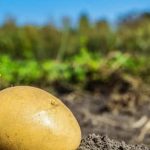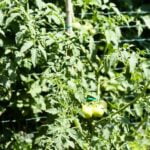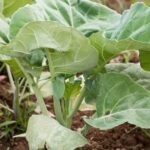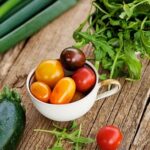Are you considering using plastic for your vegetable gardening needs but unsure of the best type to use? Choosing the right plastic is crucial for the success of your garden, and this article will guide you through the process.
From understanding the benefits and challenges of using plastic in vegetable gardening to learning about the different types of plastic available, we’ve got you covered. Read on to discover how to prepare your soil, install the plastic, and maintain it throughout the growing season.
Plastic has become an increasingly popular tool for vegetable gardening due to its many benefits. In this section, we will explore the advantages of using plastic in your garden, including improved soil moisture retention, weed suppression, and protection against pests. Understanding these benefits will help you make an informed decision about whether or not to incorporate plastic into your gardening routine.
When it comes to choosing the right type of plastic for your vegetable garden, there are several factors to consider. From durability and thickness to cost and environmental impact, it’s important to weigh all options carefully. This section will provide valuable insights into the different types of plastic suitable for vegetable gardening so that you can make an educated choice that aligns with your specific needs and values.
Benefits of Using Plastic in Vegetable Gardening
Using plastic in vegetable gardening offers several benefits that can help improve the overall success of your garden. One of the key benefits is weed control. Plastic can effectively suppress weed growth, reducing the need for manual weeding and minimizing competition for nutrients and water. This can save time and effort while promoting healthier plant growth.
Another advantage of using plastic in vegetable gardening is its ability to conserve moisture in the soil. By covering the soil with plastic, evaporation is reduced, helping to maintain adequate soil moisture levels for optimal plant growth. This can be especially beneficial during dry periods or in regions with limited rainfall.
Plastic also helps to regulate soil temperature, particularly in cooler climates. By acting as a barrier between the soil and external temperatures, plastic can create a warmer environment for plants to thrive in. This is especially useful for heat-loving vegetables that require consistently warm soil for optimal growth.
Reduced Soil Erosion
Additionally, using plastic in vegetable gardening can help prevent soil erosion. The protective layer of plastic prevents wind and water from carrying away valuable topsoil, preserving the integrity of the garden beds.
Improved Pest Management
Plastic mulch can also contribute to improved pest management by creating a physical barrier that deters certain pests from accessing plant roots and stems. This can help reduce damage caused by underground pests and crawling insects, leading to healthier plants.
Incorporating plastic into your vegetable gardening practices offers numerous benefits that promote more efficient and successful cultivation of your favorite crops. By carefully considering these advantages, you can make an informed decision about whether using plastic is the right choice for your gardening needs.
Types of Plastic Suitable for Vegetable Gardening
When considering using plastic for vegetable gardening, it is important to choose the right type of plastic that will best suit your needs. There are different types of plastic that can be used in vegetable gardening, each with its own set of benefits and considerations. Here are some common types of plastic suitable for vegetable gardening:
- Polyethylene: This is a lightweight and flexible type of plastic that is commonly used for creating raised beds and mulching. It is relatively inexpensive and can be easily manipulated to fit the specific needs of your garden.
- Polyvinyl Chloride (PVC): PVC plastic is known for its durability and strength, making it an ideal choice for constructing greenhouse structures. It is also resistant to UV rays and can withstand harsh weather conditions.
- Polypropylene: This type of plastic is often used for creating weed barriers in vegetable gardens. It is strong, tear-resistant, and helps to suppress weed growth, while still allowing water and nutrients to penetrate the soil.
When choosing the right type of plastic for your vegetable garden, consider factors such as the specific purpose (e.g. mulching, greenhouse construction, weed control), climate conditions, and the overall longevity you desire from the material.
It’s important to assess whatvtype of plastic for vegetable gardening will best suit your specific needs before making a decision. By understanding the different types of plastic available and their respective benefits, you can make an informed choice that will contribute to a successful and productive vegetable garden.
Considerations When Choosing the Right Plastic for Vegetable Gardening
When it comes to choosing the right type of plastic for vegetable gardening, there are a few considerations that gardeners need to keep in mind. The type of plastic used can have a significant impact on the success and health of the vegetable garden, so it’s important to make an informed decision.
Thickness and Durability
One of the most important considerations when choosing plastic for vegetable gardening is its thickness and durability. Thicker plastics are more resistant to tears and punctures, providing better protection for the soil and preventing weeds from growing through. Additionally, durable plastics are less likely to degrade over time, ensuring that they can be used for multiple seasons.
Transparency and Light Transmission
Another factor to consider is the transparency and light transmission of the plastic. Clear plastics allow more sunlight to reach the soil, promoting better growth and temperature regulation. On the other hand, opaque plastics can help regulate soil temperature by reducing direct sunlight exposure. Gardeners should consider their specific climate and planting needs when choosing between transparent or opaque plastics.
Environmental Impact
Finally, it’s important to consider the environmental impact of the plastic used in vegetable gardening. Some types of plastic can release toxins into the soil as they degrade, which can negatively affect plant growth and overall soil health. Choosing environmentally-friendly plastics or biodegradable alternatives can mitigate these risks and ensure a more sustainable gardening practice that minimizes harm to the environment.
Considering these factors when choosing plastic for vegetable gardening can help gardeners make an informed decision that promotes healthy plant growth while minimizing negative environmental impact. By selecting a suitable type of plastic, gardeners can create an optimal growing environment for their vegetables while maintaining sustainable gardening practices.
How to Prepare the Soil and Install the Plastic
When it comes to using plastic in vegetable gardening, proper soil preparation and installation are crucial for success. Here are some steps to follow when preparing the soil and installing the plastic for your vegetable garden:
- Clear the area: Before installing the plastic, it’s important to clear the area of any debris, weeds, or rocks. This will ensure a smooth surface for laying down the plastic and prevent any unevenness.
- Soil testing: It’s essential to test the soil to determine its pH level and nutrient content. This will help you make any necessary adjustments before laying down the plastic.
- Amend the soil: Based on the results of your soil test, you may need to amend the soil with organic matter or fertilizers to ensure it is suitable for vegetable growth under the plastic.
Once the soil is prepared, you can move on to installing the plastic for your vegetable garden:
- Lay down a drip irrigation system: Before laying down the plastic, it’s recommended to install a drip irrigation system. This will ensure that your plants receive water directly at their roots, minimizing water waste and weed growth.
- Lay down the plastic: After preparing the soil and installing a drip irrigation system, carefully lay down the chosen type of plastic over the prepared area. Be sure to secure it in place using stakes or sandbags at regular intervals.
- Create planting holes: Depending on what type of vegetables you plan to grow, create planting holes in the plastic using a sharp tool. Make sure they are large enough for your young plants but not too big that they expose too much bare soil.
Following these steps will help ensure that your vegetable garden is properly set up for successful growth under plastic.
Remember that choosing the right type of plastic is crucial for ensuring its effectiveness in vegetable gardening.
Maintenance Tips for Plastic in Vegetable Gardening
Maintaining the plastic in your vegetable garden is crucial to ensure its longevity and effectiveness. Proper maintenance can also contribute to the overall health and productivity of your plants. Here are some essential maintenance tips for using plastic in vegetable gardening:
First, regularly check the condition of the plastic to look for any signs of wear and tear. This includes tears, holes, or damage caused by weather conditions or pests. Repair or replace any damaged sections promptly to prevent further issues.
It’s also important to keep the plastic clean to avoid the build-up of dirt, debris, and potentially harmful microorganisms. Regularly remove any accumulated debris and consider using a gentle cleaning solution when necessary to maintain a clean and hygienic growing environment.
Additionally, proper installation and anchoring of the plastic are crucial for its maintenance. Ensure that the plastic is securely anchored to prevent shifting or tearing due to wind or other environmental factors.
Proper storage of the plastic when not in use is also essential. Store it in a cool, dry place away from direct sunlight to prolong its lifespan and maintain its integrity for future use.
Incorporating these maintenance tips into your vegetable gardening routine can help ensure that the plastic remains an effective tool for maximizing the health and yield of your crops.
| Maintenance Tips | Benefits |
|---|---|
| Regularly check for wear and tear | Prevents further damage to the plastic |
| Keep the plastic clean | Avoids build-up of debris and harmful microorganisms |
| Proper installation and anchoring | Prevents shifting or tearing due to environmental factors |
Common Mistakes to Avoid When Using Plastic in Vegetable Gardening
When using plastic in vegetable gardening, it’s important to be aware of some common mistakes that can affect the success of your garden. One of the most common mistakes is using the wrong type of plastic. It’s important to choose a plastic that is suitable for vegetable gardening, such as UV-resistant polyethylene plastic or landscape fabric, which allows water and air to pass through while blocking weeds.
Another mistake to avoid is not preparing the soil properly before installing the plastic. It’s crucial to ensure that the soil is well-drained and free from any rocks or debris that could puncture the plastic. Additionally, failure to secure the plastic properly can lead to it being blown away by strong winds or shifting out of place, causing damage to your plants.
Overlooking maintenance is another common mistake in using plastic for vegetable gardening. It’s essential to regularly check and maintain the plastic coverings, repairing any tears or holes promptly. Failure to do so can result in pests and diseases infiltrating your garden, ultimately damaging your crops.
Overall, being mindful of these common mistakes can help you effectively use plastic in your vegetable garden and maximize its benefits.
| Common Mistakes | Consequences |
|---|---|
| Using the wrong type of plastic | Can lead to inadequate protection and ineffective weed control |
| Failing to prepare the soil properly | May result in punctures in the plastic and poor drainage |
| Neglecting maintenance | Can lead to pest and disease infestation in the garden |
Alternatives to Using Plastic in Vegetable Gardening
When considering alternatives to using plastic in vegetable gardening, there are a few environmentally-friendly options that can be explored. One popular alternative is the use of biodegradable mulch made from materials such as paper, straw, or cardboard. These natural materials break down over time, enriching the soil and reducing waste compared to traditional plastic mulch.
Another alternative to plastic in vegetable gardening is using organic fabric or weed barrier cloth. These materials allow for water and air penetration while suppressing weed growth. Additionally, they can be easily removed and reused, making them a sustainable choice for gardeners looking to reduce their environmental impact.
One more alternative worth considering is the use of compost or organic matter as a mulch for vegetable gardening. This not only adds nutrients to the soil but also helps retain moisture and suppress weed growth. Using compost or organic matter as a mulch aligns with sustainable gardening practices and reduces the need for synthetic materials like plastic.
It’s important to weigh the pros and cons of each alternative to determine which best suits your specific needs and gardening goals. While these alternatives may require more frequent replacement compared to plastic, they offer eco-friendly solutions that contribute positively to the overall health of your vegetable garden. By exploring these options, you can make an informed decision on how to best care for your garden while minimizing environmental impact.
Conclusion and Final Tips for Successful Vegetable Gardening With Plastic
In conclusion, choosing the right type of plastic for vegetable gardening can have numerous benefits, including improved soil temperature and moisture retention, weed suppression, and increased crop yield. When considering which type of plastic to use, it’s important to take into account factors such as durability, thickness, and UV resistance. By carefully preparing the soil and installing the plastic correctly, gardeners can create an optimal environment for their vegetables to thrive.
To maintain the effectiveness of the plastic in vegetable gardening, regular maintenance is key. This includes monitoring for any tears or damage to the plastic, as well as ensuring proper irrigation and ventilation. Additionally, it’s important to avoid common mistakes such as using poor quality plastic or neglecting to remove the plastic at the end of the growing season.
While using plastic in vegetable gardening can be highly beneficial, some alternatives exist for those who prefer more sustainable options. These alternatives include biodegradable mulch films or organic materials such as straw or leaves. However, it’s important to weigh the pros and cons of each option before making a decision that best suits your gardening needs.
Ultimately, when used properly and with careful consideration of the type of plastic being used, vegetable gardening with plastic can be a successful and rewarding practice. With proper maintenance and attention to detail, gardeners can reap the many benefits that using plastic in vegetable gardening has to offer.
Frequently Asked Questions
What Plastic Is Safe for Growing Vegetables?
When growing vegetables, it’s important to use food-safe plastic materials. Look for plastics labeled as “food safe” or “safe for gardening.” Avoid using PVC-based plastics or any that contain harmful chemicals like BPA.
What Kind of Plastic Do You Use for a Garden Bed?
For garden beds, the best kind of plastic to use is untreated, high-density polyethylene (HDPE) or polypropylene. These types of plastics are durable, resistant to UV radiation, and generally safe for growing plants.
What Is the Best Plastic for a Garden?
The best plastic for a garden is one that is UV-resistant, durable, and has no harmful chemicals that can leach into the soil. HDPE and polypropylene are commonly used in gardening due to their safety and longevity. Avoid using low-quality plastics that may degrade quickly or leach toxins into the soil.

If you’re looking to get into vegetable gardening, or are just looking for some tips on how to make your current garden better, then you’ve come to the right place! My name is Ethel and I have been gardening for years. In this blog, I’m going to share with you some of my best tips on how to create a successful vegetable garden.





